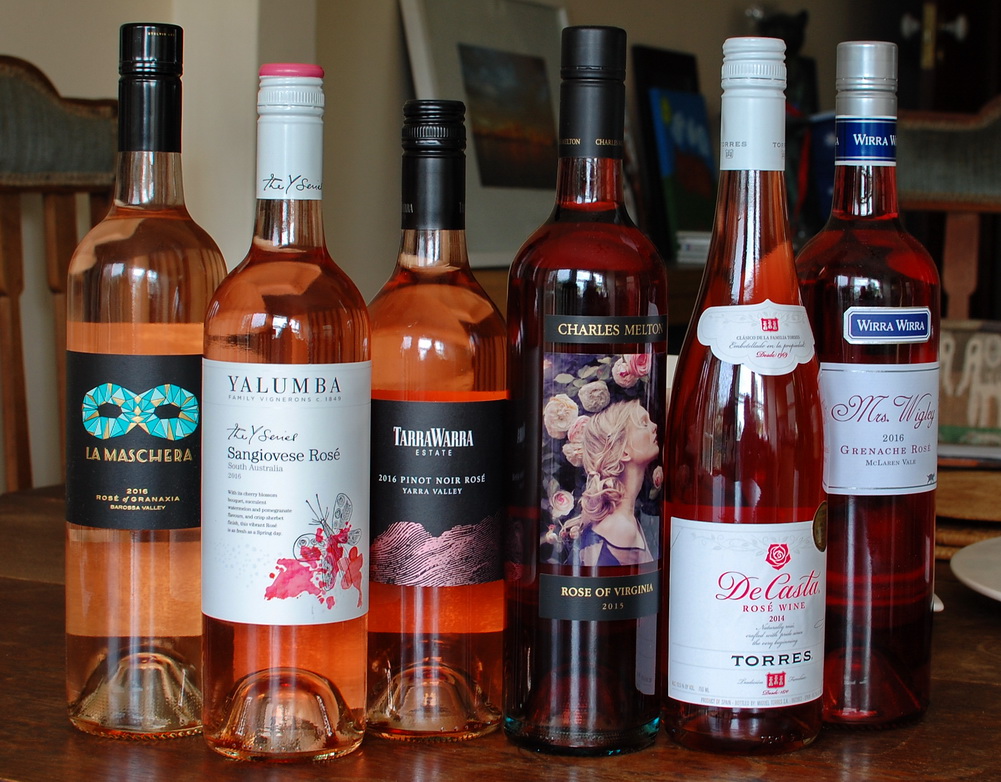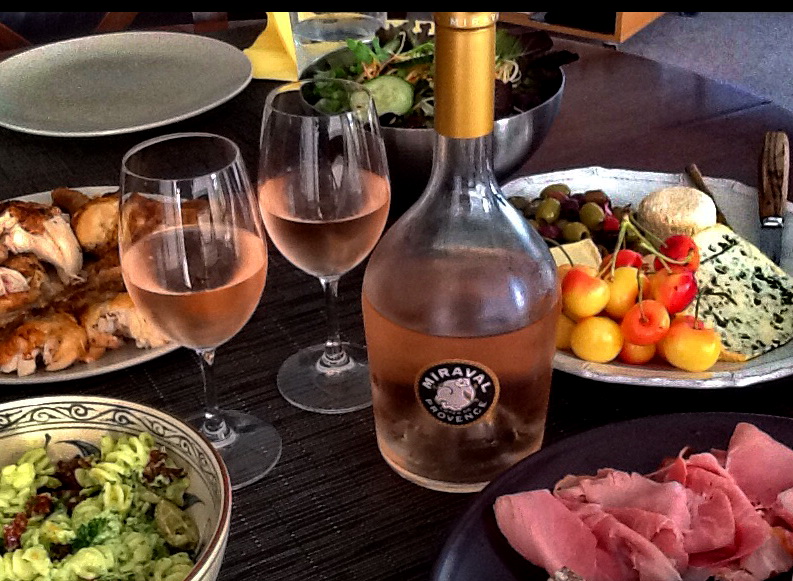10 years ago, no one drank Rosé. This year it’s the hottest drink around
‘I haven’t seen this much excitement over a wine style since Marlborough sauvignon blanc first started to take off in the market,’ Dan Murphy’s Peter Nixon tells Max Allen. ‘We have seen sales growth of between 200 and 300 % in the over-$10 rose category over the last twelve months. It is that dramatic.’
A cynic would argue that Semillon outsold Rosé by a factor of 10 to 1 a year ago, but the trend for Rosé is up all in the northern hemisphere as well. So who’s drinking so much Rosé all of a sudden? The same people who were drinking Kiwi Savvy last year? Cool youngish female professionals? No. It’s young males, the ABC tells us. Gen Ys, Millennials and Hipsters. For decades, no one drank Rose. Suddenly it’s hip. Last year, my hip daughter who is always ahead of the curve told me she was drinking Rosé almost exclusively.
Pretty as a picture
Most people don’t see Rosé as a serious wine. It’s on the frivolous end of the spectrum: The colour ranges from pale salmon to bright red. it’s pretty, and so is the package it comes in as a rule. You don’t need to know much about wine to enjoy Rosé either. It’s a pretty wine, it’s cool, crisp and refreshing, it rhymes with spring and summer.
You can drink it without second thoughts. You can drink it on its own or you can drink it with food. You can just chill out on it. ‘Rosé is a wine of the moment,’ says Ray Isle at Food & Wine. ‘It’s a fling. People get married to Burgundy. Rosé, they wake up in the morning and realize they’ve forgotten its name.’
Rose is a style that can be made from a range of red grape varieties that include Grenache, Sangiovese, Pinot Noir, Shiraz, Cabernet and more. The pink colour comes from leaving the juice on the skins just long enough. The same goes for pink champagne.
What foods do you drink Rosé with?
The kind of fare that’s popular at hip food places, of course: antipasto, tapas, pizzas, pasta, tacos, burgers, pink lamb, cold meats, salads and summer picnics. Crisp and dry is best with these foods. The full-bodied, fruity style will go better with spicy and sweet-and sour Asian dishes, and with curries. The people at Big Oven tell us that cool Rosé is a perfect match for warm-climate cuisines such as those of Asia, India, Mexico and the Mediterranean.
The lighter styles of Rosé that serve up strawberries and cream can go with light and fluffy desserts but are best drunk on their own. That’s the simple end of the story.
If you want to dig deeper into matching Rosé and food, Fiona Beckett is a rewarding destination. She lists 8 types of Rosé and various foods that go with them, but please take it all with a pinch of salt because some of her ideas are pretty dubious: drinking elegant fruity Rosé with lobster, seared salmon or tuna for example. Same goes for the list from Lindsay Hunt at Buzzfeed (porterhouse steak??), but some of the dishes look interesting.
What’s the damage?
The good news is that you can buy good Aussie Rosés for little more than $10: Angoves Nine Vines and Deep Woods Harmony are a couple of good examples. $20 will buy you de Bortoli’s La Boheme Act III or Charlie Melton’s Rosé of Virginia. The fancy Pitt & Jollie Miraval will set you back $30, but I’m not sure how it’s holding up after recent events.
As usual, your sharp sommelier will find you more obscure Rosés from the far-flung corners of France or Chili, but hey: let’s not get too serious. My advice is to stick to the simply joys Rosé has to offer.
Dan Murphy’s Peter Nixon reckons that Rosé will outsell white wine in 10 years’ time, but I reckon he’s wrong. Why? Because it’s fashion driving the current boom and, like bubbles of soap, fashion doesn’t last long. The Hipsters will find another cool drink next year, but some of the more mature drinkers may rekindle their Romance with Rosé in the meantime.
Kim


